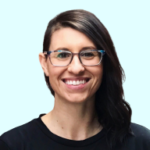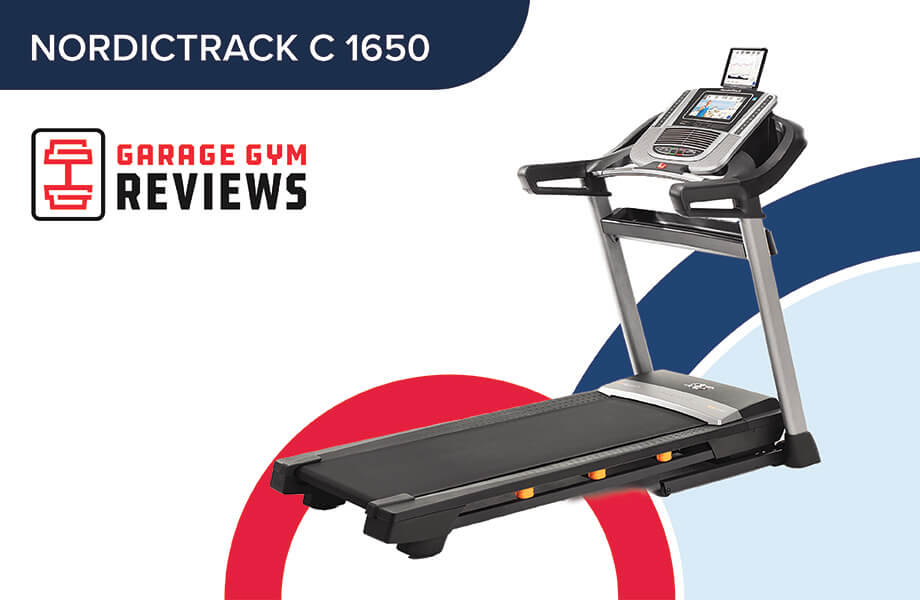Ever wondered, “How much protein do I need?” It’s an essential question to address and then execute, but the quality of the protein source is just as important as meeting your daily protein requirements.
Confession time: I used to think high-quality protein was all about steak and chicken until my nutrition journey began. (I can’t be the only one, right?)
As a dietitian for almost a decade now, I’ve come to understand and value the different types of protein available. Protein is essential in your meals, and I’m here to guide you on high-quality choices for your diet (beyond steak and chicken)!
Medical disclaimer: This article is intended for educational and informational purposes only. It is not intended as a substitute for medical advice. For health advice, contact a licensed healthcare provider.
What Exactly Is Protein?
Protein is one of the three macronutrients, alongside carbohydrates and fats, needed in large amounts (macro = large). Its building blocks, amino acids1, come in about 20 different types, forming all the proteins in our body.
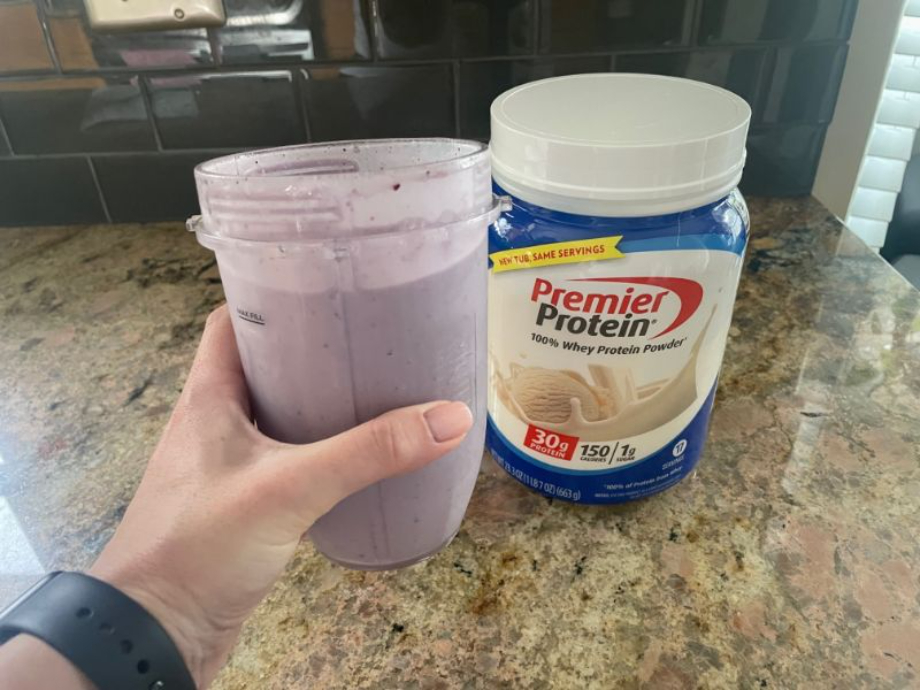
These protein building blocks mostly fall into two amino acid categories: essential and non-essential amino acids. Branched-chain amino acids and conditionally essential amino acids are subcategories of amino acids.
Let it be known that non-essential doesn’t mean they aren’t essential, it’s just that our bodies can produce them if they are not consumed from our food. The 11 non-essential amino acids include:
- Alanine
- Arginine*
- Asparagine
- Aspartic acid
- Cysteine*
- Glutamic acid
- Glutamine*
- Glycine*
- Proline*
- Serine*
- Tyrosine*
Conditional amino acids, marked with asterisks, are non-essential except in times of stress or inflammation when the body needs more than it can produce.
On the other hand, essential amino acids can’t be made by the body and must come from our diet. The nine essential amino acids include:
- Histidine
- Isoleucine
- Leucine
- Lysine
- Methionine
- Phenylalanine
- Threonine
- Tryptophan
- Valine
Branched-chain amino acids (BCAAs) are a subcategory of essential amino acids with protein anabolic properties. The three BCAAs include:
- Isoleucine
- Leucine
- Valine
Essential and non-essential amino acids also dictate whether or not a protein is considered “complete” or “incomplete.”
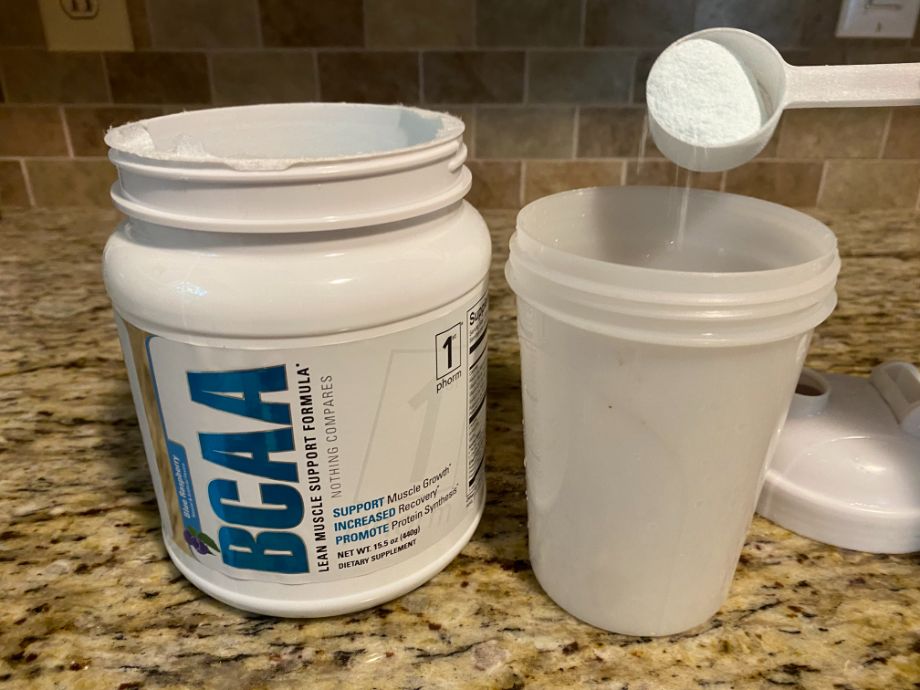
RELATED: Best BCAA
Complete vs Incomplete Proteins
Complete proteins provide all nine essential amino acids for human growth and development. Animal sources—like red meat, poultry, fish, eggs, dairy, and a select few plants—are complete proteins.
Conversely, incomplete proteins lack one or more essential amino acids. Most plants, except for soy and a few others, are incomplete proteins.
Complete proteins are your all-star protein team, providing all essential amino acids, while incomplete proteins are like individual players. However, mixing different foods throughout the day can fill your daily protein roster, which is especially helpful for people following vegetarian diets2.
What Are the Different Types of Protein Sources?
The different types of protein sources are often labeled complete or incomplete, but it’s simpler to classify high-protein foods as either animal (primarily complete) or plant proteins (mostly incomplete). This method is more approachable and user-friendly, reducing the constant need to Google questions like, “Are eggs a complete protein?”
Animal Proteins
Animal proteins, found in various sources, provide all essential amino acids and a blend of vital nutrients:

- Red meats: Red meats—such as beef, pork, lamb, veal, and bison—are high in protein, iron, zinc, and vitamin B12.
- White poultry meats: Chicken, turkey, duck, and other poultry meats3 provide highly digestible protein, iron, zinc, copper, and B vitamins, especially niacin.
- Milk and dairy products: Milk and dairy products like cheese and yogurt are rich in protein and essential nutrients like calcium.
- Eggs: The egg white holds the protein, but don’t fear the cholesterol-containing yolks, folks (unless instructed by a healthcare provider). Current research4 shows no clear link between dietary cholesterol and blood cholesterol levels, and the yolk contains essential nutrients (like choline) that support cognition and brain health5.
- Fish: Whether fresh or saltwater, fish is an excellent source of protein. Fatty fish, like salmon and mackerel, also supply omega-3 fatty acids that support heart and brain health.
RELATED: Best Fish Oil Supplement
Although meats6 and animal products provide complete proteins and critical nutrients, tackling global deficiencies in iron and zinc, their higher saturated fat content than plant sources raises health concerns. This issue and a surge in animal protein demand7 drives interest in plant proteins.
Plant Proteins
Plant proteins, also known as vegetable proteins, often lack at least one essential amino acid. However, varying these plant proteins can create a more comprehensive amino acid profile:
- Legumes: Bean varieties, chickpeas, lentils, and soy are excellent sources of protein and fiber.
- Soy: Soy stands out among legumes, given the limited awareness of other plant proteins. Common dietary soy products include edamame (immature soybeans), tofu, and tempeh.
- Nuts and seeds: While mostly healthy fat sources, nuts and seeds—like sunflower seeds—provide high-quality plant protein, fiber, and other beneficial nutrients.
- Whole grains: Whole grains—such as oats, brown rice, and quinoa (technically a seed)—offer modest protein but excel in providing fiber, phosphorus, magnesium, and B vitamins like folate and thiamin.

While plants are a source of lean protein, they often don’t match the protein density of animal sources. For instance, 100 grams (3.5 ounces) of cooked chicken delivers 31 grams of protein, whereas you’d need to consume about 800 grams of canned chickpeas for the same amount of protein (which also brings a hefty 48 grams of fiber, potentially causing significant digestive discomfort).
RELATED: High-Protein Vegetables
Conversely, plant protein8 isolates and concentrates, which consist of 80 percent or more protein, offer a robust 10-20 grams of protein per serving with minimal carbs and fat. These concentrated protein sources are commonly available in protein shakes and powder mixes.
What Are the Different Types of Protein Powder?
Whole food sources should comprise most, if not all, of your daily protein needs. However, protein powder is a convenient option that caters to various lifestyles and dietary requirements, including health, environmental, and religious considerations. Let’s explore the many types of protein powder you can choose from.
Dairy-Based Protein Powders
Casein and whey, the two main proteins in cow’s milk, are isolated in the cheesemaking process. The milk is separated into solid curds (casein) and liquid (whey) and can be processed into dairy-based protein powders.
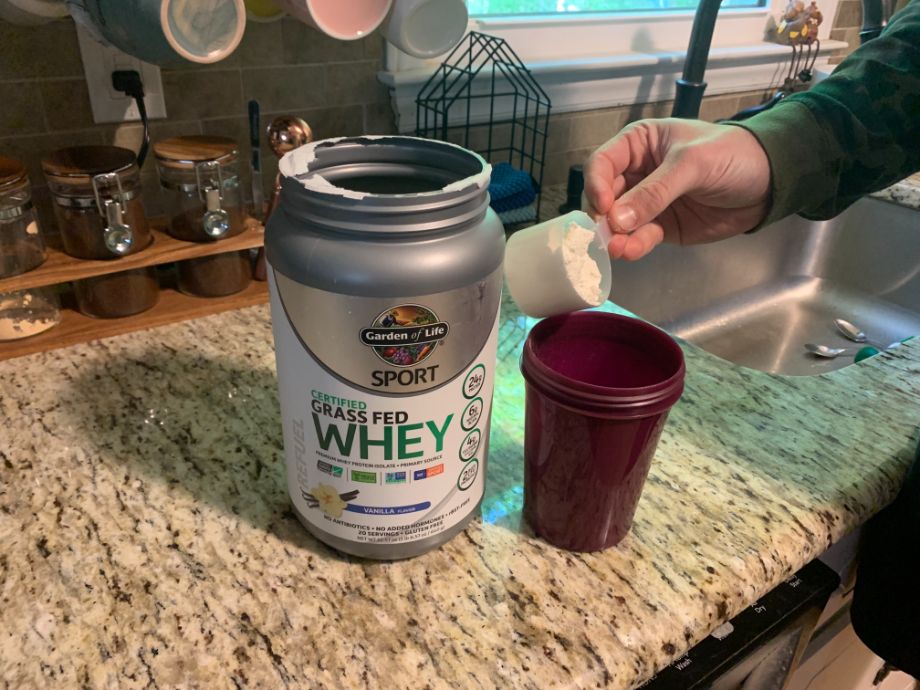
When comparing casein protein vs whey, one significant difference is their absorption rates. Whey protein is rapidly absorbed, making it ideal for post-exercise recovery. In contrast, casein digests slowly, making it the go-to protein before bed to support prolonged muscle protein synthesis during sleep.
It’s important to note that casein and whey proteins are beneficial any time of day. However, knowing their unique absorption rates and timing their consumption may maximize their effectiveness.
Plant-Based Protein Powders
Plant-based protein powders are sourced from high-protein plant sources with most of the carb and fat content removed. They are especially favored by those seeking dairy, lactose, and animal-free protein alternatives for dietary preferences and restrictions.
RELATED: Best Vegan Protein Powder
Common types of plant-based protein powders include:
- Soy protein powder
- Hemp protein powder
- Pea protein powder
- Chia protein powder
- Pumpkin seed protein powder
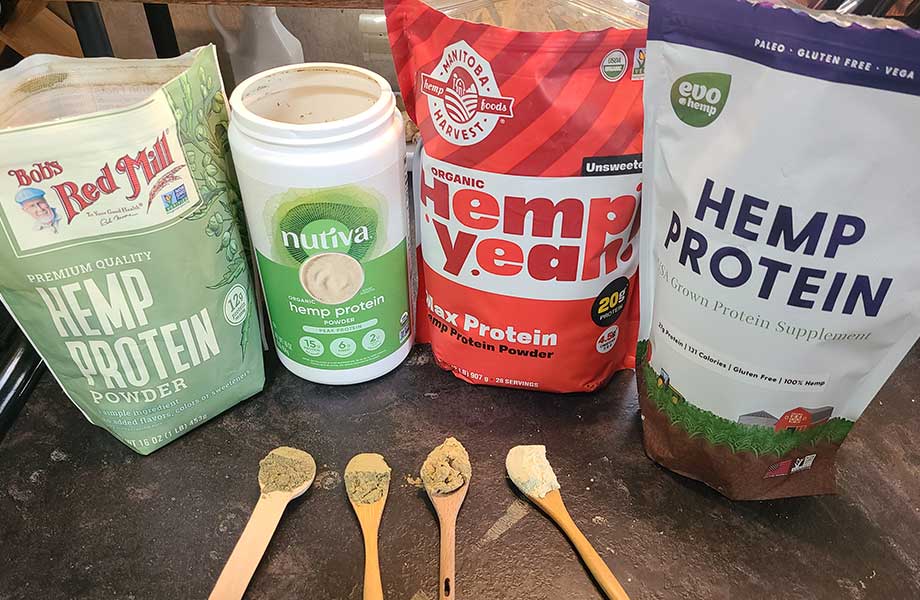
Recall that plant-based proteins typically lack one or more essential amino acids. And while pea protein has all nine, it’s low in methionine and less bioavailable. Blends of plant proteins are often used for a complete amino acid profile for this reason. Still, verifying the label’s amino acid and protein content is wise when choosing a plant-based protein supplement.
Egg White Protein
Made from egg whites, this protein powder is fat-free, high in essential amino acids, and easily digestible.
RELATED: Best Egg White Protein
Collagen Protein
Derived from animal connective tissues, many collagen protein powders are flavorless, which means you can add a scoop to your morning cup of coffee or pre-workout smoothie without worrying about it affecting the taste.
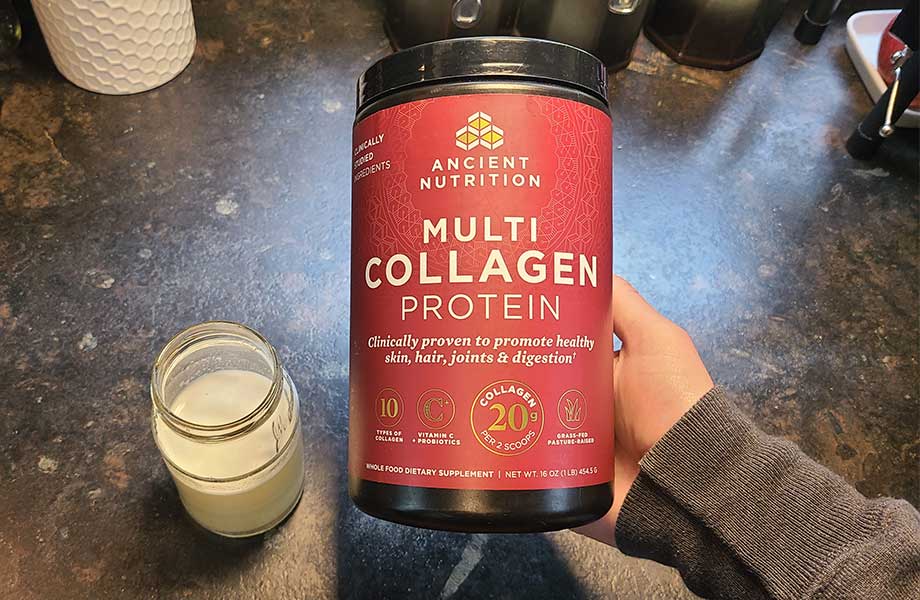
How Do Our Bodies Process Protein?
When we consume protein, our bodies embark on a complex journey to break it down and utilize it effectively. Here’s a simplified step-by-step overview of this process:
- Digestion begins in the stomach: Once protein enters the stomach, it encounters hydrochloric acid and the enzyme pepsin, which start breaking the protein into smaller chains of amino acids called peptides.
- Further breakdown in the small intestine: The partially digested protein moves to the small intestine, where enzymes from the pancreas (proteases) further break down peptides into individual amino acids.
- Absorption into the bloodstream: The amino acids are then absorbed through the lining of the small intestine into the bloodstream.
- Distribution to cells: These amino acids travel through the blood to various cells in the body, where they are used for various vital functions, including building and repairing tissues, producing enzymes and hormones, and supporting immune function.
- Utilization and storage: The body uses amino acids for immediate needs. Any excess amino acids can be converted to glucose and used for energy or stored as fat. Unlike carbohydrates and fats, the body does not store amino acids for later use.
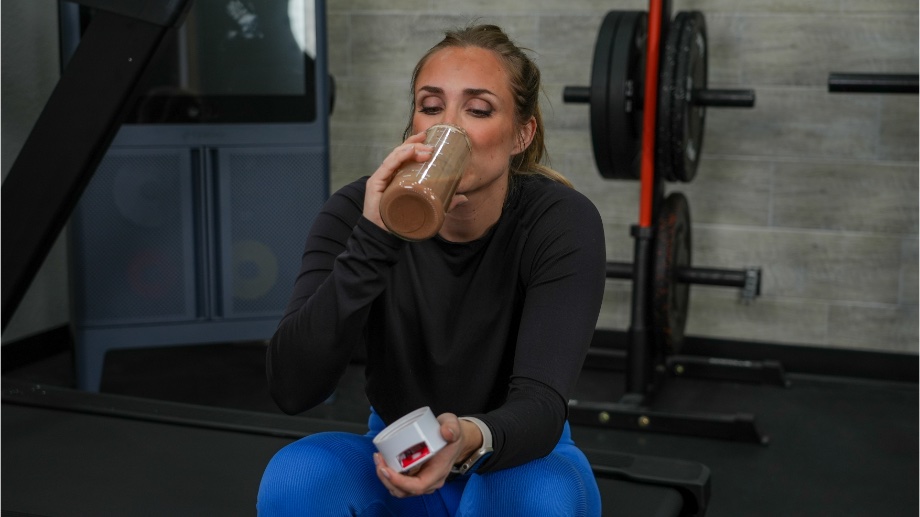
RELATED: How Much Protein Can Your Body Absorb?
Protein Benefits
Protein is more than beneficial—your body NEEDS protein (more on that below). It fuels thousands of bodily processes as enzymes and supports every structure in our bodies, and that’s just scratching the surface. Let’s dive into the most intriguing benefits of protein.
Enhances Muscle Growth, Strength, and Recovery
A quick lesson on how to build muscle and strength: you must prioritize resistance exercise training and your diet. Resistance training causes tiny breakdowns in the muscle fibers, then protein steps in to prevent further breakdown and initiate muscle repair.
A systematic review9 suggests that post-workout protein may reduce muscle soreness and markers of muscle damage. When consistently training, applying progressive overload, and eating enough protein, muscle mass grows and takes shape, with greater strength likely to follow.
Improves Body Composition and Metabolism
Improving body composition typically involves a dual approach: increasing muscle mass and reducing body fat. Many essential factors are at play here, including a diet rich in high-protein meals.
Research, including a 2020 review10, supports that a high-protein diet increases muscle and fat loss when combined with exercise. Complementary research11 suggests protein promotes weight loss and maintenance by influencing energy metabolism, controlling appetite, and regulating calorie intake.
Promotes Whole-Body Health
Protein plays a vital role in overall health, impacting most, if not all, body systems:
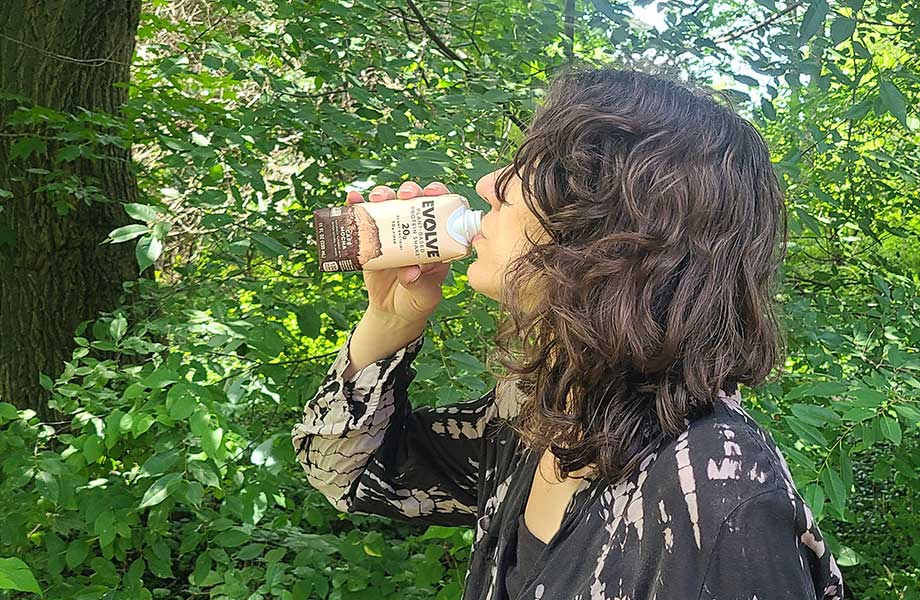
- Bone health: Despite the debate about the effect of protein on bone health, 2011 research12 proposes that protein is a crucial nutrient for bone health and helps prevent osteoporosis. Some evidence13 shows that high-protein diets can reduce hip fracture risk compared to low-protein diets.
- Immune health: Proteins, particularly antibodies, are essential for a robust immune system. Insufficient protein or amino acids can weaken immunity and increase infection risks.
- Hormone health: Proteins and amino acids are critical for regulating hormone production. For instance, adequate protein is necessary for proper thyroid function and maintaining insulin growth factor 1 (IGF-1) levels, vital for muscle growth.
- Neurological health: Essential amino acids14 support the central nervous system and neurotransmitters, influencing mood and blood pressure. A 2022 review15 suggests higher protein intake, especially from sources like legumes, fish, and lean poultry, can reduce cognitive decline, unlike processed proteins like hot dogs.
Can Help With Weight Management
Protein increases satiety16—aka you’ll feel “full” longer. This can help reduce overall calorie intake, supporting weight management and weight loss.
Can Help With Blood Sugar Control
Protein can help regulate blood sugar levels17 by slowing down the absorption of carbohydrates, which is particularly beneficial for individuals with type-2 diabetes or those at risk of developing this condition. Including high-quality proteins in meals can stabilize blood sugar levels and prevent spikes that can lead to complications over time
Supports Heart Health
According to a systematic review and meta-analysis published in The BMJ18, higher total protein intake is associated with a lower risk of all-cause mortality. The review also found that a higher intake of plant proteins was associated with a lower risk of cardiovascular mortality, highlighting the importance of choosing the right protein sources.
Why Do We Need Protein?
While many associate protein with #gains, this macronutrient plays other vital roles besides building lean muscle. Here’s why you need to prioritize protein in your diet:
Muscle Growth and Repair
Protein is fundamental in building and repairing muscles. This is crucial not only for athletes and bodybuilders but all humans, as muscle mass is a key factor for longevity19.
Enzyme Production
Proteins are the building blocks of enzymes, which are necessary for almost all chemical reactions in the body, including digestion and energy production.

Hormonal Balance
Many hormones, including insulin, are proteins that regulate various bodily functions, including growth and metabolism.
Immune Function
Proteins play a vital role in immune health by forming antibodies that help protect the body from infections.
Cellular Structure
Proteins are a key cell membrane component, helping maintain cell shape and integrity.
Protein Drawbacks
While protein is crucial for health, its drawbacks stem from its source and overconsumption.
Processed vs Unprocessed Proteins
Processed meats20, preserved through smoking, curing, and salting (like hot dogs), are associated with cancer, heart disease, and higher mortality risk. The effects of unprocessed meats, only preserved by refrigeration or freezing, are mixed; some studies show varying health risks, and others21 suggest insufficient data for conclusive findings.
Processed plant proteins may lose essential nutrients, often replaced with additives like added sugar and sodium. Moreover, a 2021 study22 suggests vegetarians and vegans might consume more ultra-processed foods than meat eaters.
Red Meat Debate
Red meat raises concerns, mainly due to its saturated fat content, but the research is debatable. Some studies suggest a connection between red meat and health risks like heart disease23, while others, like those published in the American Journal of Clinical Nutrition24, report no associations.
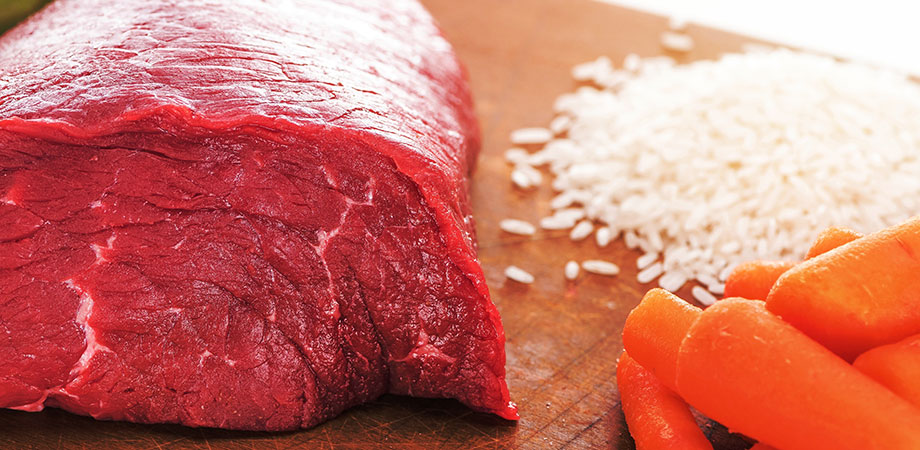
Excess Protein Intake Risks
You can have too much of a good thing, high-quality protein included. Be mindful of these high-protein diet side effects:
- Nutrient deficiencies
- Digestive distress
- Weight gain
- Kidney strain (particularly in those at risk of developing or currently managing a kidney condition)
Minimize these risks by varying minimally processed sources of protein to enrich your diet with essential nutrients like iron (red meat), calcium (dairy), and fiber (plant proteins). We also encourage consulting a healthcare professional for a diet tailored to your nutritional needs and preferences.
Next up is a guide on the recommended protein intake:
Recommended Protein Intake
How much protein should you consume per day? While there’s no one-size-fits-all approach, the Recommended Daily Allowance (RDA) is 0.8 grams of protein per kilogram of body weight. However, that only equates to 0.36 grams per pound, which isn’t sufficient for active individuals.
Here’s a breakdown of recommended protein intake25 based on your activity level.
| Activity Level | Protein Intake (g/kg of body weight) |
| Minimal physical activity | 0.8-1 |
| Moderate physical activity | 1.3 |
| Intense physical activity | 1.6 |
Healthy adults can safely consume 2 grams per kilogram of body weight over the long term, with 3.5 grams representing the tolerable upper limit for well-adapted subjects. To get a better idea of exactly how much protein you should consume based on your body weight and activity level, I recommend Calculator.net’s protein intake calculator.
Tips to Hit Your Protein Target
Not sure how you’ll reach your protein goal? These strategies can help you meet your daily threshold.
- Start your day with protein: Include eggs, Greek yogurt, or your favorite protein smoothie recipe in your breakfast.
- Snack on protein-rich foods: Keep snacks like nuts, seeds, cheese, or protein bars handy to boost your protein intake between meals.
- Add protein to salads: Enhance your salads with protein-rich ingredients such as grilled chicken, tofu, beans, lentils, or quinoa.
- Use protein supplements: To increase your protein intake, add protein powders (whey, casein, or plant-based) to smoothies, oatmeal, or baking recipes.
- Choose protein-rich grains: Incorporate grains like quinoa, farro, and bulgur, which have higher protein content than traditional grains like rice and pasta.
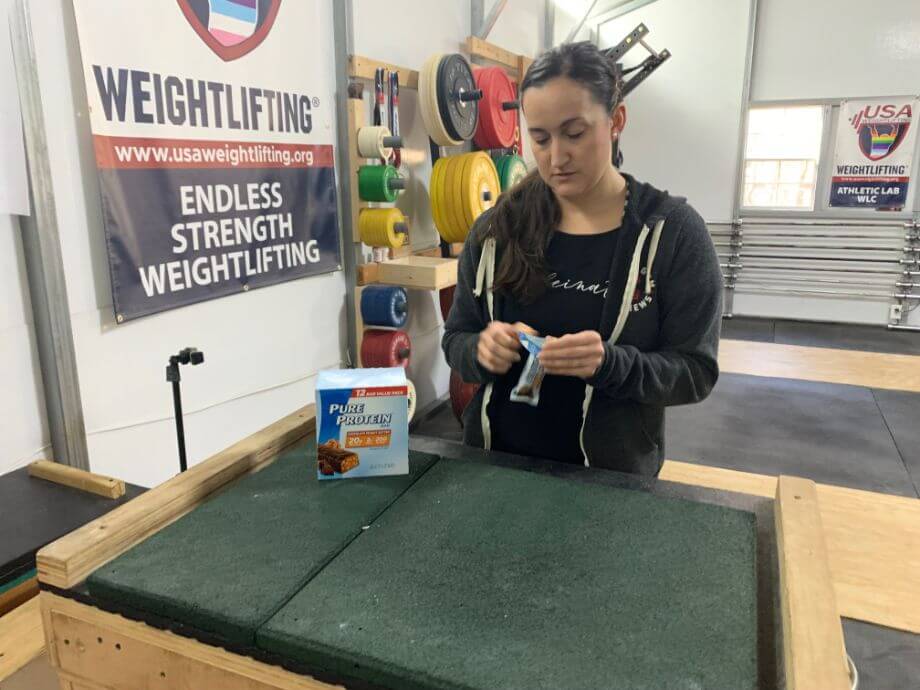
Signs of Protein Deficiency
A protein deficiency in your diet can be detrimental to your health. Here are signs to look out for if you’re concerned about your protein intake:
Muscle Wasting
Muscle wasting, or loss of muscle mass, is one of the most noticeable signs of protein deficiency. Without adequate protein, the body starts to break down muscle tissue to meet its protein needs, leading to weakness and loss of strength.
Hair, Skin, and Nail Problems
Protein is essential for healthy hair, skin, and nails. A deficiency can lead to brittle nails, thinning hair, and dry, flaky skin, as the body prioritizes protein use for more critical functions. Adding a collagen supplement to your diet can help keep these problems at bay.
RELATED: 6 Benefits of Collagen Protein Powder
Edema
Edema26, or swelling caused by fluid retention, can occur due to low protein levels. Proteins help maintain the balance of fluids in the body, and a deficiency can lead to imbalances and swelling, especially in your legs and feet.
Fatigue and Weakness
Protein deficiency can result in chronic fatigue and weakness. Proteins are vital for energy production and muscle function, and insufficient protein intake can lead to reduced physical and mental performance.
How Vegetarians and Vegans Can Get Complete Proteins
Since vegetarians and vegans steer clear of animal protein sources, it can be difficult to get all the amino acids they need. Here are a few tips to overcome this hurdle:
- Combine foods: Pairing foods such as rice and beans, hummus and pita, or peanut butter on whole-grain bread can provide all essential amino acids.
- Include soy products: Incorporate tofu, tempeh, and edamame into meals. Soy is a complete protein and versatile ingredient.
- Eat quinoa and buckwheat: These grains are complete proteins and can be used in various dishes, including salads and main courses.
- Diversify protein sources: Include a variety of nuts, seeds, legumes, and whole grains to ensure a broad spectrum of amino acids.
Different Types of Protein: Final Thoughts
Although different types of protein can be categorized as complete or incomplete based on their essential amino acid profiles, it’s more practical for everyday conversations to refer to them as either animal or plant proteins.
Animal proteins provide complete protein and all essential amino acids, whereas plant proteins often lack at least one essential amino acid. However, combining various protein-rich foods allows you to create a comprehensive amino acid profile, meet your daily protein needs, and obtain beneficial nutrients unique to each protein type—such as iron in beef and fiber in beans.
Remember, dietary protein is more than just a nutrient, it’s vital to a healthy life and life itself. So, explore beyond the traditional steak and chicken and embrace the different types of protein available to you.
Different Types of Protein: FAQs
What is the best protein type?
The optimal protein choice is a complete protein, rich in essential amino acids crucial for growth and repair, mainly found in animal products. However, combining different plant proteins helps obtain all essential amino acids for those following a plant-based diet.
What are the 2 main types of protein?
Proteins are generally classified as complete or incomplete based on their essential amino acid profiles. However, it’s often more practical to refer to them as animal (primarily complete) or plant (mostly incomplete) proteins.
What’s good protein for weight loss?
To effectively utilize high-protein foods for weight loss, choose lean options such as sirloin, skinless chicken, low-fat milk, and plant-based sources like beans. Just remember, achieving weight loss requires maintaining a calorie deficit.
These statements have not been evaluated by the Food and Drug Administration. This product is not intended to diagnose, treat, cure, or prevent any diseases.
References
- Lopez MJ, Mohiuddin SS. Biochemistry, Essential Amino Acids. [Updated 2023 Mar 13]. In: StatPearls [Internet]. Treasure Island (FL): StatPearls Publishing; 2023 Jan-. Available from: https://www.ncbi.nlm.nih.gov/books/NBK557845/
- Marsh KA, Munn EA, Baines SK. Protein and vegetarian diets. Med J Aust. 2013 Aug 19;199(S4):S7-S10. doi: 10.5694/mja11.11492. PMID: 25369930.
- Marangoni F, Corsello G, Cricelli C, et al. Role of poultry meat in a balanced diet aimed at maintaining health and wellbeing: an Italian consensus document. Food Nutr Res. 2015;59:27606. Published 2015 Jun 9. doi:10.3402/fnr.v59.27606
- Fernandez ML, Murillo AG. Is There a Correlation between Dietary and Blood Cholesterol? Evidence from Epidemiological Data and Clinical Interventions. Nutrients. 2022;14(10):2168. Published 2022 May 23. doi:10.3390/nu14102168
- Lee GJ, Oda K, Morton KR, et al. Egg intake moderates the rate of memory decline in healthy older adults. J Nutr Sci. 2021;10:e79. Published 2021 Sep 21. doi:10.1017/jns.2021.76
- Klurfeld DM. What is the role of meat in a healthy diet?. Anim Front. 2018;8(3):5-10. Published 2018 Jul 7. doi:10.1093/af/vfy009
- Ismail BP, Senaratne-Lenagala L, Stube A, et al. Protein demand: review of plant and animal proteins used in alternative protein product development and production. Anim Front. 2020;10(4):53-63. doi:https://doi.org/10.1093/af/vfaa040
- Hertzler SR, Lieblein-Boff JC, Weiler M, et al. Plant Proteins: Assessing Their Nutritional Quality and Effects on Health and Physical Function. Nutrients. 2020;12(12):3704. Published 2020 Nov 30. doi:10.3390/nu12123704
- Pasiakos SM, Lieberman HR, McLellan TM. Effects of protein supplements on muscle damage, soreness and recovery of muscle function and physical performance: a systematic review. Sports Med. 2014 May;44(5):655-70. doi:
- Antonio J, Candow DG, Forbes SC, et al. Effects of Dietary Protein on Body Composition in Exercising Individuals. Nutrients. 2020;12(6):1890. Published 2020 Jun 25. doi:10.3390/nu12061890
- Leidy HJ, Clifton PM, Astrup A, et al. The role of protein in weight loss and maintenance. Am J Clin Nutr. 2015 Jun;101(6):1320S-1329S. doi: 10.3945/ajcn.114.084038. Epub 2015 Apr 29. PMID: 25926512.
- Bonjour JP. Protein intake and bone health. Int J Vitam Nutr Res. 2011 Mar;81(2-3):134-42. doi: 10.1024/0300-9831/a000063. PMID: 22139564.
- Zittermann A, Schmidt A, Haardt J, et al; German Nutrition Society. Protein intake and bone health: an umbrella review of systematic reviews for the evidence-based guideline of the German Nutrition Society. Osteoporos Int. 2023 Aug;34(8):1335-1353. doi: 10.1007/s00198-023-06709-7. Epub 2023 May 1. PMID: 37126148; PMCID: PMC10382330.
- Institute of Medicine (US) Committee on Military Nutrition Research. The Role of Protein and Amino Acids in Sustaining and Enhancing Performance. Washington (DC): National Academies Press (US); 1999. 14, Amino Acid and Protein Requirements: Cognitive Performance, Stress, and Brain Function. Available from: https://www.ncbi.nlm.nih.gov/books/NBK224629/
- Yeh TS, Yuan C, Ascherio A, et al. Long-term dietary protein intake and subjective cognitive decline in US men and women. Am J Clin Nutr. 2022 Jan 11;115(1):199-210. doi: 10.1093/ajcn/nqab236. PMID: 34293099; PMCID: PMC8755047.
- Moon, J., & Koh, G. (2020). Clinical Evidence and Mechanisms of High-Protein Diet-Induced Weight Loss. Journal of obesity & metabolic syndrome, 29(3), 166–173. https://doi.org/10.7570/jomes20028
- Gannon MC, Nuttall FQ, Saeed A, Jordan K, Hoover H. An increase in dietary protein improves the blood glucose response in persons with type 2 diabetes. Am J Clin Nutr. 2003 Oct;78(4):734-41. doi: 10.1093/ajcn/78.4.734. PMID: 14522731.
- Naghshi S, Sadeghi O, Willett W C, Esmaillzadeh A. Dietary intake of total, animal, and plant proteins and risk of all cause, cardiovascular, and cancer mortality: systematic review and dose-response meta-analysis of prospective cohort studies BMJ 2020; 370 :m2412 doi:10.1136/bmj.m2412
- Srikanthan, P., & Karlamangla, A. S. (2014). Muscle Mass Index as a Predictor of Longevity in Older-Adults. The American Journal of Medicine, 127(6), 547. https://doi.org/10.1016/j.amjmed.2014.02.007
- O’Connor LE, Kim JE, Campbell WW. Total red meat intake of ≥0.5 servings/d does not negatively influence cardiovascular disease risk factors: a systemically searched meta-analysis of randomized controlled trials. Am J Clin Nutr. 2017;105(1):57-69. doi:10.3945/ajcn.116.142521
- Lescinsky H, Afshin A, Ashbaugh C, et al. Health effects associated with consumption of unprocessed red meat: a Burden of Proof study. Nat Med. 2022 Oct;28(10):2075-2082. doi: 10.1038/s41591-022-01968-z. Epub 2022 Oct 10. PMID: 36216940; PMCID: PMC9556326.
- Gehring J, Touvier M, Baudry J, et al. Consumption of Ultra-Processed Foods by Pesco-Vegetarians, Vegetarians, and Vegans: Associations with Duration and Age at Diet Initiation. J Nutr. 2020;151(1):120-131. doi:https://doi.org/10.1093/jn/nxaa196
- Lichtenstein AH, Appel LJ, Vadiveloo M, et al. 2021 Dietary Guidance to Improve Cardiovascular Health: A Scientific Statement From the American Heart Association. Circulation. 2021 Dec 7;144(23):e472-e487. doi: 10.1161/CIR.0000000000001031. Epub 2021 Nov 2. PMID: 34724806.
- Iqbal R, Dehghan M, Mente A, et al. Associations of unprocessed and processed meat intake with mortality and cardiovascular disease in 21 countries [Prospective Urban Rural Epidemiology (PURE) Study]: a prospective cohort study. Am J Clin Nutr. 2021 Sep 1;114(3):1049-1058. doi: 10.1093/ajcn/nqaa448. PMID: 33787869
- Wu G. Dietary protein intake and human health. Food Funct. 2016 Mar;7(3):1251-65. doi: 10.1039/c5fo01530h. PMID: 26797090.
- Lent-Schochet D, Jialal I. Physiology, Edema. [Updated 2023 May 1]. In: StatPearls [Internet]. Treasure Island (FL): StatPearls Publishing; 2024 Jan-. Available from: https://www.ncbi.nlm.nih.gov/books/NBK537065/

